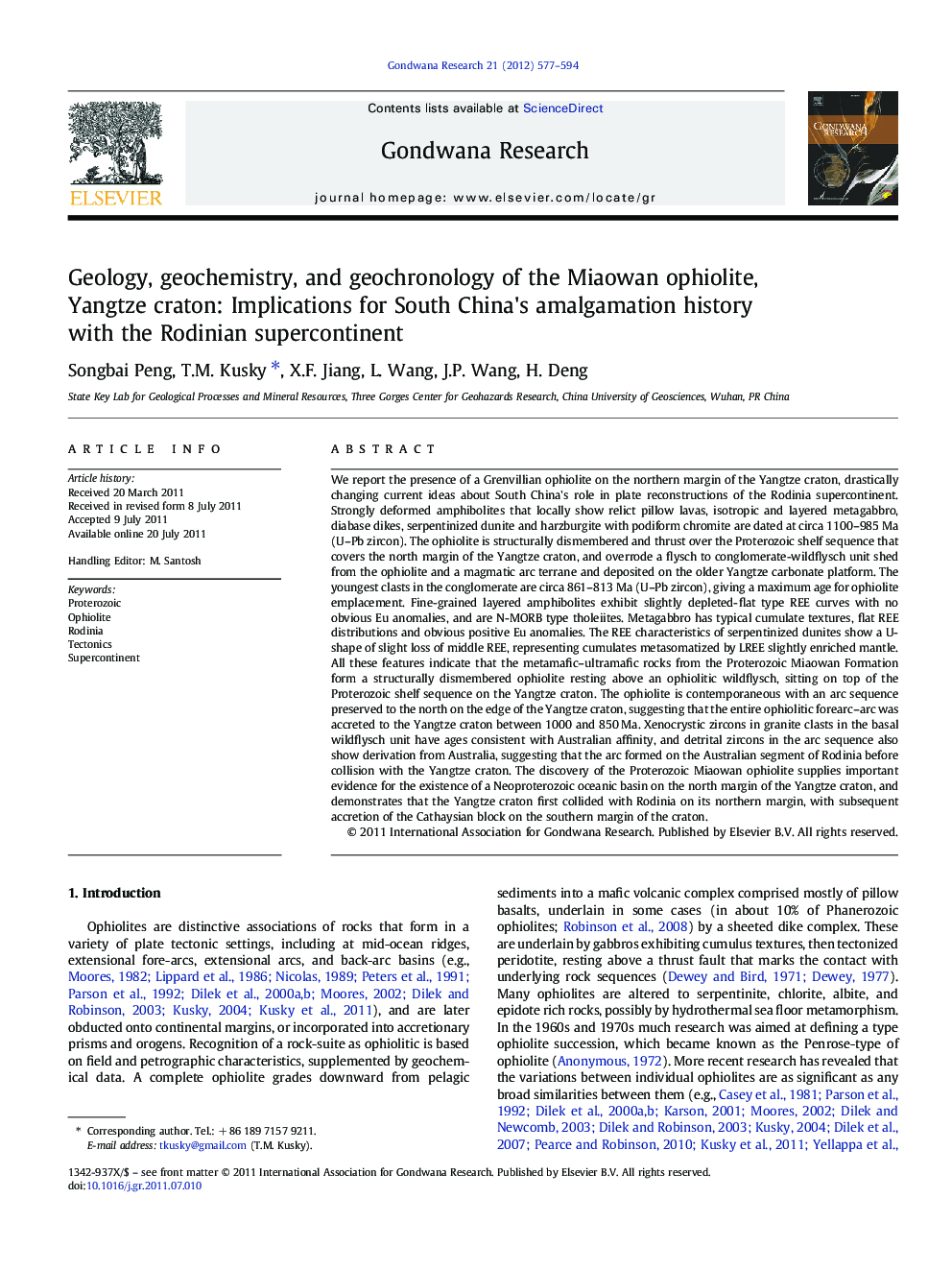| Article ID | Journal | Published Year | Pages | File Type |
|---|---|---|---|---|
| 4727612 | Gondwana Research | 2012 | 18 Pages |
We report the presence of a Grenvillian ophiolite on the northern margin of the Yangtze craton, drastically changing current ideas about South China's role in plate reconstructions of the Rodinia supercontinent. Strongly deformed amphibolites that locally show relict pillow lavas, isotropic and layered metagabbro, diabase dikes, serpentinized dunite and harzburgite with podiform chromite are dated at circa 1100–985 Ma (U–Pb zircon). The ophiolite is structurally dismembered and thrust over the Proterozoic shelf sequence that covers the north margin of the Yangtze craton, and overrode a flysch to conglomerate-wildflysch unit shed from the ophiolite and a magmatic arc terrane and deposited on the older Yangtze carbonate platform. The youngest clasts in the conglomerate are circa 861–813 Ma (U–Pb zircon), giving a maximum age for ophiolite emplacement. Fine-grained layered amphibolites exhibit slightly depleted-flat type REE curves with no obvious Eu anomalies, and are N-MORB type tholeiites. Metagabbro has typical cumulate textures, flat REE distributions and obvious positive Eu anomalies. The REE characteristics of serpentinized dunites show a U-shape of slight loss of middle REE, representing cumulates metasomatized by LREE slightly enriched mantle. All these features indicate that the metamafic–ultramafic rocks from the Proterozoic Miaowan Formation form a structurally dismembered ophiolite resting above an ophiolitic wildflysch, sitting on top of the Proterozoic shelf sequence on the Yangtze craton. The ophiolite is contemporaneous with an arc sequence preserved to the north on the edge of the Yangtze craton, suggesting that the entire ophiolitic forearc–arc was accreted to the Yangtze craton between 1000 and 850 Ma. Xenocrystic zircons in granite clasts in the basal wildflysch unit have ages consistent with Australian affinity, and detrital zircons in the arc sequence also show derivation from Australia, suggesting that the arc formed on the Australian segment of Rodinia before collision with the Yangtze craton. The discovery of the Proterozoic Miaowan ophiolite supplies important evidence for the existence of a Neoproterozoic oceanic basin on the north margin of the Yangtze craton, and demonstrates that the Yangtze craton first collided with Rodinia on its northern margin, with subsequent accretion of the Cathaysian block on the southern margin of the craton.
Graphical abstractFigure optionsDownload full-size imageDownload as PowerPoint slideHighlights► Circa 1.0 Ga ophiolite from the north margin of the Yangtze craton. ► The ophiolite has typical N-MORB to forearc geochemical signatures. ► Yangtze craton first accreted an arc, then amalgamated with Rodinia along its northern margin.
